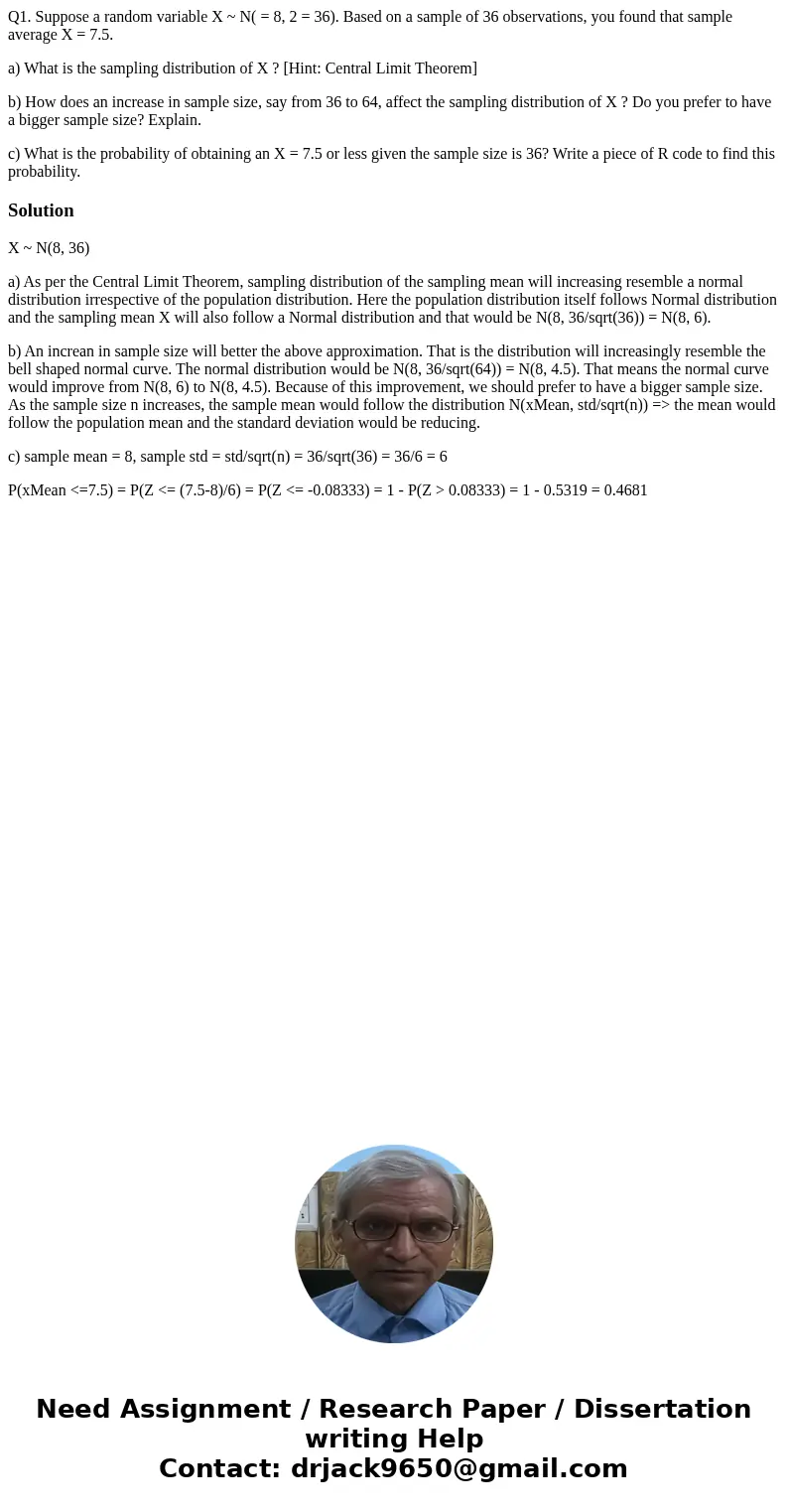Q1 Suppose a random variable X N 8 2 36 Based on a sample
Q1. Suppose a random variable X ~ N( = 8, 2 = 36). Based on a sample of 36 observations, you found that sample average X = 7.5.
a) What is the sampling distribution of X ? [Hint: Central Limit Theorem]
b) How does an increase in sample size, say from 36 to 64, affect the sampling distribution of X ? Do you prefer to have a bigger sample size? Explain.
c) What is the probability of obtaining an X = 7.5 or less given the sample size is 36? Write a piece of R code to find this probability.
Solution
X ~ N(8, 36)
a) As per the Central Limit Theorem, sampling distribution of the sampling mean will increasing resemble a normal distribution irrespective of the population distribution. Here the population distribution itself follows Normal distribution and the sampling mean X will also follow a Normal distribution and that would be N(8, 36/sqrt(36)) = N(8, 6).
b) An increan in sample size will better the above approximation. That is the distribution will increasingly resemble the bell shaped normal curve. The normal distribution would be N(8, 36/sqrt(64)) = N(8, 4.5). That means the normal curve would improve from N(8, 6) to N(8, 4.5). Because of this improvement, we should prefer to have a bigger sample size. As the sample size n increases, the sample mean would follow the distribution N(xMean, std/sqrt(n)) => the mean would follow the population mean and the standard deviation would be reducing.
c) sample mean = 8, sample std = std/sqrt(n) = 36/sqrt(36) = 36/6 = 6
P(xMean <=7.5) = P(Z <= (7.5-8)/6) = P(Z <= -0.08333) = 1 - P(Z > 0.08333) = 1 - 0.5319 = 0.4681

 Homework Sourse
Homework Sourse